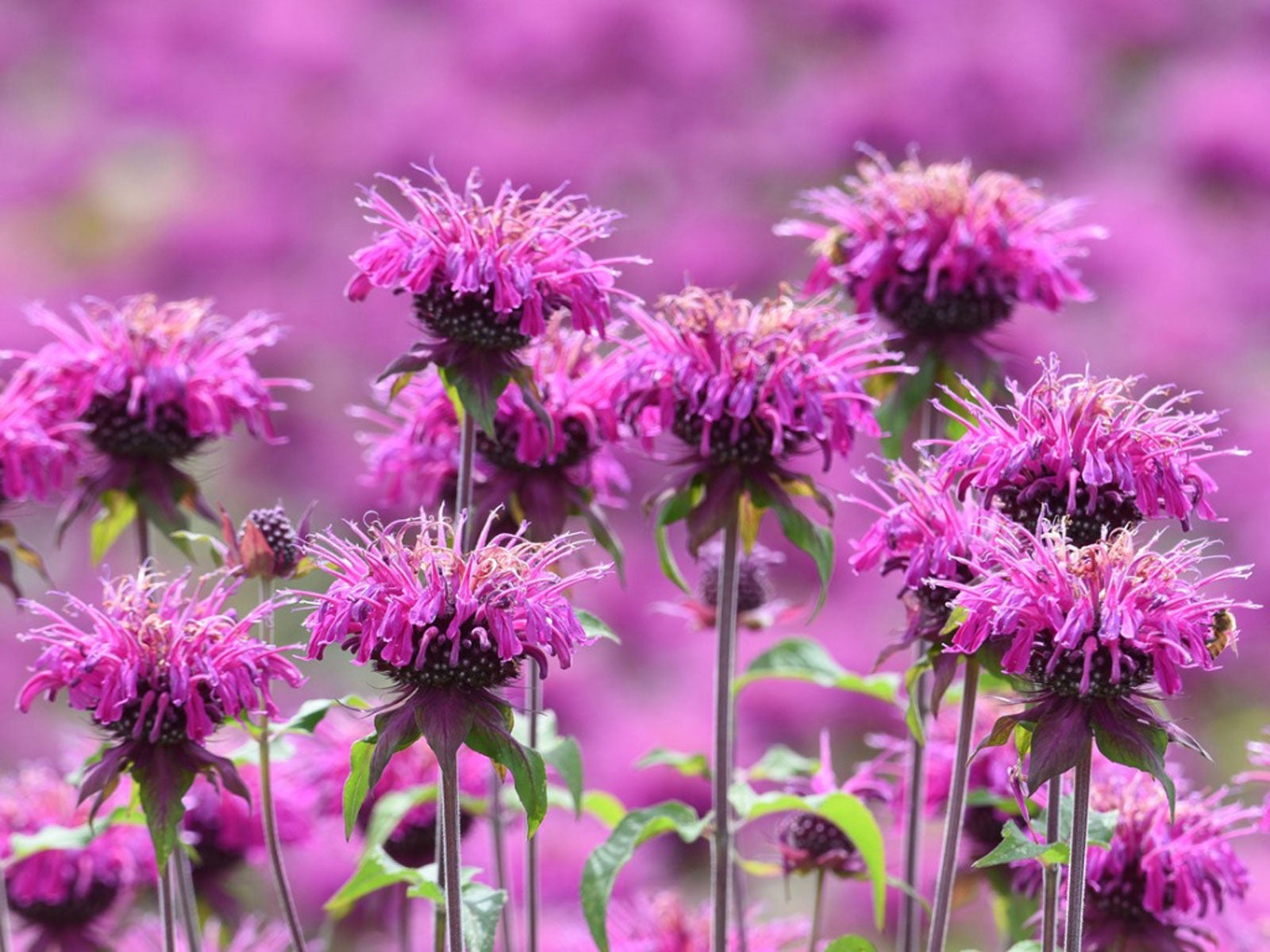

Wild bergamot attracts a number of specialist bees, bumble bees, predatory wasps, hummingbirds, and hawk moths. If a Venus fly trap isn't catching its own food (like if it's indoors for the winter), it has to be hand-fed with live insects, dried blood worms, or high-protein fish food. Wild bergamot is one of several plants also known by the common name of bee balm. Color ranges from purple to lavender to pink, rarely white. And it must be distilled or clean rainwater, please because it can't handle hard water that comes from most of our taps.Īnd one more thing: Venus fly traps must eat regularly, and not like most plants that are good with a dose of fertilizer. Detailed Information Flower: Round cluster 1 to 2 inches across of tubular flowers, solitary at the end of branching stems arising from leaf axils. The Venus fly trap also likes wet feet, meaning if in a pot, its roots must always be sitting in water. It is known to attract many types of bees, as well as butterflies and fertilize the soil as it grows. It tends to thrive in thickets, borders of limestone glades, as well as in fields. Bee balm is a perennial and floriferous plant. Habitat Wild bergamot habitats include moist to slightly dry soil but it prefers sunny, dry locations. If kept inside, it craves more light than any sunny window sill can provide, so artificial light is in order. Height Wild bee balm grows between 30 and 70 cm tall.
#Bee balm plant information full
A Venus fly trap needs full sun if planted outside. Bee balm is a perennial and floriferous plant. While these plants are fascinating and entertaining, they require rather specific conditions. The most popular among them, the Venus fly trap, captures insects and spiders in its claw-like, clamshell-shaped leaves, snaps them shut, and then "eats" its prey by releasing digestive enzymes. If you have any questions, please call Customer Service toll-free at (800) 925-9387 or contact us by email.There aren't many of them, but the ultimate in natural pest control is a carnivorous plant. See our shipping information page for approximate ship dates and more detailed information. If your order requires more than one shipment and all items are shipping to the same address, there is no additional shipping charge. Perennial and spring-planted bulb orders will arrive separately from seeds. Perennials and spring-planted bulbs are shipped at the proper planting time for your hardiness zone.


Please open upon receipt and follow the instructions included. All perennials and spring-planted bulbs are packaged to withstand shipping and are fully-guaranteed. The ‘Plant Information’ section describes how that item will ship. Native to North America, the bee balm plant blooms from late spring into late summer in shades of pink, lavender, purple, white and red. Some perennials are shipped as potted plants, some as perennial roots packed in peat. You may hear bee balm, a member of the mint family (Lamiaceae), also called bergamot, bergamot plant, horsemint and Oswego tea. You will receive a second email the day your order ships telling you how it has been sent.
#Bee balm plant information download
View more Planting Guides, or download our complete Planting Guide for tips on caring for your plants when you receive your order, as well as planting instructions for Perennials, Spring-Planted Bulbs, Fall-Planted Bulbs, Cacti & Succulents, Xeric Plants and more.Īs soon as your order is placed you will receive a confirmation email. The cold hardy zone 4 varieties are excellent for fall planting. If you have particularly challenging gardening conditions (hot humid summers, periodic drought, or cold winters-as low as USDA zone 4), we recommend planting Mondarda fistulosa or Monarda 'Peter's Purple' (USDA zone 6) which grow easily in most soil types, including clay.


 0 kommentar(er)
0 kommentar(er)
